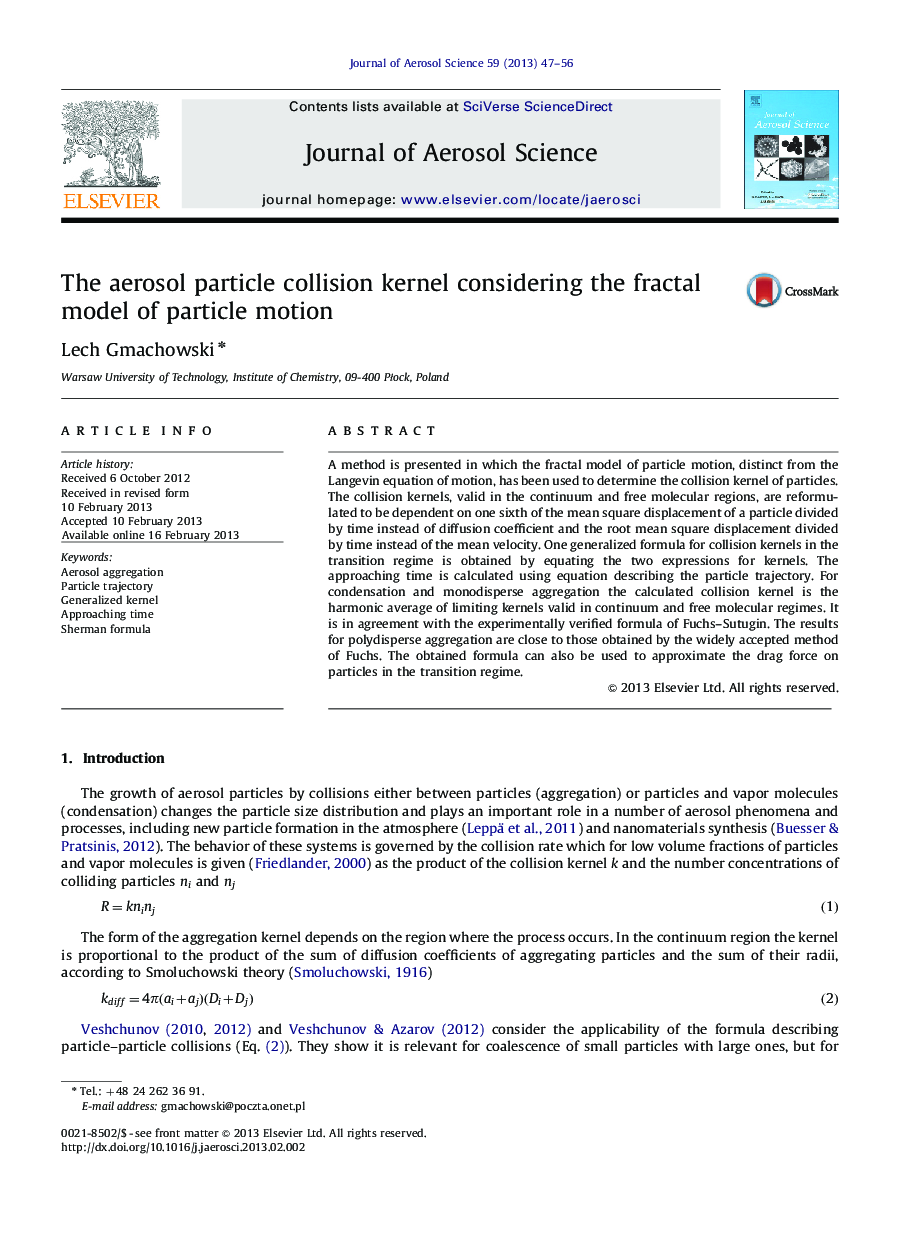| کد مقاله | کد نشریه | سال انتشار | مقاله انگلیسی | نسخه تمام متن |
|---|---|---|---|---|
| 4452565 | 1620764 | 2013 | 10 صفحه PDF | دانلود رایگان |

A method is presented in which the fractal model of particle motion, distinct from the Langevin equation of motion, has been used to determine the collision kernel of particles. The collision kernels, valid in the continuum and free molecular regions, are reformulated to be dependent on one sixth of the mean square displacement of a particle divided by time instead of diffusion coefficient and the root mean square displacement divided by time instead of the mean velocity. One generalized formula for collision kernels in the transition regime is obtained by equating the two expressions for kernels. The approaching time is calculated using equation describing the particle trajectory. For condensation and monodisperse aggregation the calculated collision kernel is the harmonic average of limiting kernels valid in continuum and free molecular regimes. It is in agreement with the experimentally verified formula of Fuchs–Sutugin. The results for polydisperse aggregation are close to those obtained by the widely accepted method of Fuchs. The obtained formula can also be used to approximate the drag force on particles in the transition regime.
The Sherman formula is the model dependence for monodisperse aggregation and condensation kernels. It also approximates the points calculated for polydisperse aggregation. Figure optionsDownload high-quality image (165 K)Download as PowerPoint slideHighlights
► Fractal model of the ballistic-diffusive transition is used to calculate aggregation kernel.
► The aggregation kernel is based on mean square displacements of approaching particles.
► The time required to approach two particles is computed by particle trajectory equation.
► The model has experimental confirmation by other experimentally verified formulae.
Journal: Journal of Aerosol Science - Volume 59, May 2013, Pages 47–56